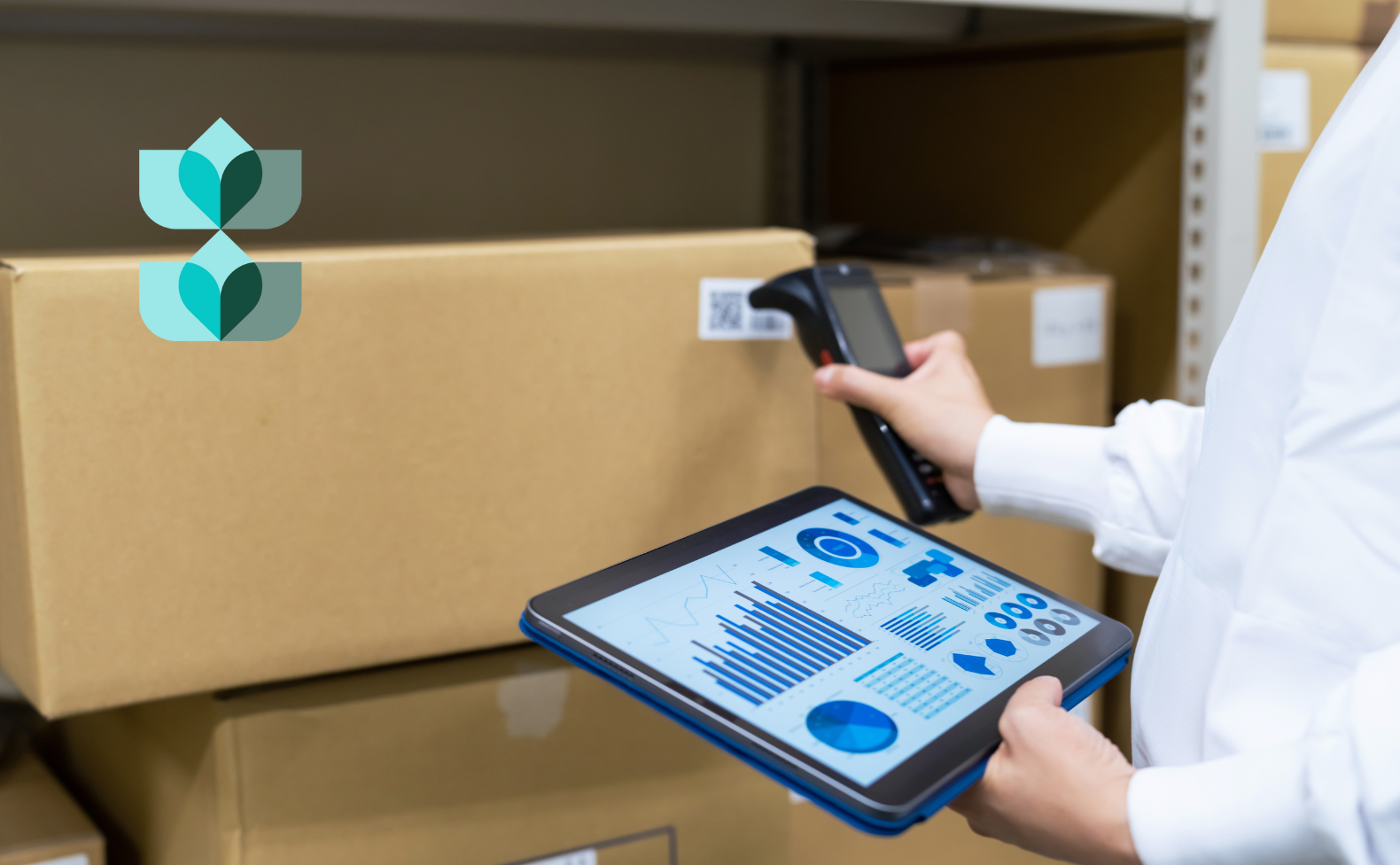Offering support and training to staff is absolutely essential when implementing an all-new food manufacturing software. The entire organization needs to be abreast of the changes to come in processes, and this requires proper support and training in order to get staff up to speed in a timely fashion. If the staff is not adequately trained in the software being implemented, there could be major headaches down the road, leading to decreased productivity. By investing in the time and resources necessary to train employees on fundamental elements of food manufacturing software, food companies can save themselves countless hours and dollars. Here are the key aspects of the roles of support and training as it relates to food manufacturing software implementation:
-
Support:
Support teams are responsible for providing technical assistance and troubleshooting during the implementation process and beyond. Their role includes:
-
Assisting with software installation and configuration.
-
Addressing any technical issues or bugs that arise during implementation.
-
Providing guidance and solutions for software-related challenges.
-
Offering ongoing user support, answering questions, and resolving issues as they arise.
-
Collaborating with the software vendor ensures smooth implementation and timely resolution of problems.
-
Training:
Training is essential to ensure that users understand how to effectively utilize the food manufacturing software. The training process typically involves the following:
-
Conducting user training sessions, either in-person or through online resources.
-
Familiarizing users with the software's features, functionality, and user interface.
-
Providing hands-on training on specific tasks and processes relevant to the food manufacturing industry.
-
Creating training materials, such as user manuals, documentation, or video tutorials.
-
Tailoring training to different user groups, such as operators, supervisors, and managers, based on their specific roles and responsibilities.
-
Offering follow-up training sessions or refresher courses to reinforce learning and address any additional training needs.
Support and training work together to ensure a smooth transition to the new software and maximize its benefits. They help users overcome initial challenges, gain confidence in using the system, and optimize their workflow to improve productivity and efficiency in food manufacturing operations.

How Do Companies Train Employees to Use Food Manufacturing Software?
Training employees to use food manufacturing software is a crucial step in ensuring a successful implementation and maximizing the benefits of the software. Companies employ various strategies and approaches to train their employees effectively. In this response, I will outline a comprehensive training program that companies can follow to train employees in using food manufacturing software.
-
Assess Training Needs:
Before designing the training program, it's essential to assess the training needs of employees. This can be done by considering factors such as the employees' existing knowledge and skill level, their roles and responsibilities, and the specific functionalities and features of the software that they need to utilize. This assessment helps in customizing the training program to meet the specific requirements of the employees.
-
Set Training Objectives:
Clear training objectives should be established to guide the training program. These objectives should align with the company's goals and the desired outcomes of implementing the food manufacturing software. Some common training objectives may include:
-
Familiarizing employees with the software's features, functions, and user interface.
-
Ensuring employees understand how to perform key tasks using the software.
-
Promoting efficiency and accuracy in using the software to improve productivity.
-
Enhancing employees' problem-solving abilities related to the software.
-
Ensuring compliance with regulatory requirements related to food manufacturing.
-
Develop Training Materials:
Based on the training objectives, training materials should be developed to support the learning process. The training materials can include:
-
User manuals or guides that provide step-by-step instructions on using the software.
-
Video tutorials demonstrating key functionalities and processes.
-
Interactive e-learning modules or online courses that employees can access at their convenience.
-
Job aids or quick reference guides for easy access to essential information.
-
Hands-on exercises or simulations to practice using the software in a controlled environment.
-
Choose Training Methods:
Companies can utilize a combination of training methods to cater to different learning styles and preferences. Some common training methods for food manufacturing software implementation include:
Instructor-led training:
Conducting face-to-face or virtual training sessions led by a knowledgeable instructor. This method allows for real-time interaction, clarification of doubts, and immediate feedback.
Online training:
Using webinars, virtual classrooms, or learning management systems to deliver training remotely. Online training provides flexibility, self-paced learning, and easy access to training materials.
Hands-on practice:
Allowing employees to explore the software through hands-on exercises or simulations. This method reinforces learning by providing practical experience in using the software.
Peer learning:
Encouraging employees to collaborate and share their knowledge and experiences with the software. This can be done through group discussions, workshops, or mentorship programs.
On-the-job training:
Integrating software training into employees' daily work routines. This approach involves assigning tasks that require software usage and providing guidance and support as needed.

-
Conduct Training Sessions:
Once the training materials and methods are ready, it's time to conduct the training sessions. Here are some key considerations for effective training delivery:
-
Communicate the training schedule and expectations to employees well in advance.
-
Start with an overview of the software's purpose, benefits, and how it aligns with the company's goals.
-
Use a structured approach, covering one topic or module at a time, gradually building upon previous knowledge.
-
Demonstrate key functionalities and processes using real-life examples and scenarios relevant to the food manufacturing industry.
-
Provide opportunities for hands-on practice to reinforce learning and build confidence.
-
Encourage questions, discussions, and active participation to enhance engagement and understanding.
-
Offer periodic assessments or quizzes to evaluate the employees' progress and identify areas that need further reinforcement.
-
Provide feedback and address any misconceptions or challenges immediately.
-
Tailor Training to User Roles:
Different employees may have different roles and responsibilities within the food manufacturing process. It's important to tailor the training program to meet the specific needs of each user group. For example:
-
Operators: Focus on training them in the software's core functions related to their day-to-day tasks, such as recipe management, production scheduling, and quality control.
-
Supervisors: Provide training on additional features that enable them to monitor and manage production processes, analyze data, and generate reports.
-
Managers: Offer training on higher-level functionalities, such as performance metrics, resource planning, and decision-making based on software-generated insights.
-
Offer Ongoing Support:
Training should not end with the initial sessions. Ongoing support is essential to reinforce learning, address evolving challenges, and ensure long-term software adoption. Here are some ways to provide ongoing support:
-
Establish a dedicated support system to address users' queries, concerns, and technical issues related to the software.
-
Provide access to user documentation, FAQs, and online forums where employees can find answers to commonly encountered problems.
-
Offer refresher training sessions or advanced training modules for employees who require further skill development.
-
Regularly update training materials and resources to reflect software updates or changes in the food manufacturing processes.
-
Encourage employees to provide feedback on their training experience and software usability to improve future training efforts.
-
Evaluate Training Effectiveness:
To gauge the effectiveness of the training program, companies should conduct evaluations. This can be done through:
-
Surveys or feedback forms to gather employees' perceptions of the training content, delivery, and overall effectiveness.
-
Assessments or tests to measure employees' knowledge and proficiency in using the software.
-
Observation of employees' performance in real-world scenarios to assess their application of learned skills.
-
Analyzing key performance indicators (KPIs), such as productivity, accuracy, or customer satisfaction, to identify any positive impacts resulting from the software training.
-
Continuous Learning and Improvement:
Software training should be viewed as an ongoing process. As technology evolves and new software features are introduced, companies should encourage employees to engage in continuous learning. This can involve:
-
Providing access to additional resources, such as advanced training materials, webinars, or industry conferences focused on food manufacturing software.
-
Encouraging employees to share their experiences, tips, and best practices related to software usage through knowledge-sharing platforms or internal communities.
-
Establishing a feedback loop where employees can suggest improvements to the software or the training program based on their practical experiences.
By following these steps, companies can effectively train employees to use food manufacturing software. A well-planned and executed training program promotes software adoption, enhances productivity, and empowers employees to leverage the full potential of the software to achieve business objectives.

Why Do Companies Turn To Food Manufacturing Software?
Companies face numerous challenges that can impact their profitability. From managing complex supply chains to ensuring compliance with safety regulations, the demands on food manufacturers are vast. To navigate these challenges and streamline operations, many companies are turning to food manufacturing software. This article will explore the key reasons why companies choose to implement food manufacturing software and how it can boost efficiency and profitability.
Streamlining Business Processes with Food ERP
Food manufacturing software, often referred to as Food ERP (Enterprise Resource Planning), is specifically designed to meet the unique needs of the food industry. It serves as a comprehensive management tool that integrates various business functions into a single system. By automating processes such as finance management, human resources, quality assurance, and food safety monitoring, food ERP helps companies streamline their operations and improve overall efficiency.
With a food ERP system in place, companies can effectively manage and track ingredients, recipes, and production processes. This automation reduces reliance on manual processes, minimizing errors and ensuring consistency in product quality. Additionally, food ERP systems provide real-time visibility into inventory levels, enabling better demand planning and reducing the risk of stockouts or excess inventory.
Ensuring Compliance with Safety Standards and Regulations
Compliance with food safety regulations is of utmost importance for food manufacturers. Failure to meet these standards can result in costly fines, legal issues, and damage to a company's reputation. Food manufacturing software plays a crucial role in helping companies adhere to safety standards and regulations.
With food ERP systems, manufacturers can track and document every step of the production process, from ingredient sourcing to finished product distribution. This includes managing labels and barcodes, conducting audits, and ensuring proper inventory management. The software provides comprehensive traceability, making it easier to identify and address any issues that arise, minimizing the risk of product recalls and ensuring consumer safety.
Managing Costs and Improving Profitability
One of the primary concerns for food manufacturers is managing costs while maintaining profitability. Food manufacturing software offers several features that help companies achieve this goal.
Cost Analysis and Formulation Optimization:
With food ERP systems, manufacturers can perform detailed cost analyses for each product formulation. This includes comparing ingredient, labor, and consumable costs, as well as factoring in shipping and miscellaneous expenses. By identifying cost-effective formulations, companies can balance consumer preferences with production efficiency, ultimately reducing costs and increasing profitability.
Inventory Management and Waste Reduction:
Efficient inventory management is crucial for reducing waste and controlling costs. Food manufacturing software provides real-time visibility into inventory levels, expiration dates, and rotation methods. By optimizing stock allocation and minimizing waste, companies can reduce costs and improve profit margins.
Production Planning and Scheduling:
Food ERP systems offer advanced planning and scheduling features that help companies optimize production. By aligning production with sales forecasts and seasonal demand parameters, manufacturers can avoid overproduction or stock shortages. This efficient planning reduces costs associated with excess inventory or missed sales opportunities.
Enhancing Product Quality and Consistency
Maintaining consistent product quality is essential for food manufacturers to build a strong brand reputation and customer loyalty. Food manufacturing software plays a critical role in achieving this goal.
Recipe Management and Quality Control:
Food ERP systems enable companies to manage and monitor recipes, ensuring consistent ingredient quantities and production processes. By standardizing recipes and implementing quality control measures, manufacturers can achieve product consistency and meet customer expectations.
Equipment and Environmental Settings:
Food manufacturing software allows companies to monitor and adjust equipment and environmental settings based on quality trend analysis. This ensures that variations in natural ingredients and processing parameters are accounted for, resulting in consistent taste, texture, color, and quality of the final product.

Improving Supply Chain Efficiency and Customer Relations
Efficient supply chain management and strong customer relationships are crucial for the success of food manufacturers. Food manufacturing software provides tools to enhance these aspects of the business.
Supply Chain Visibility and Control:
Food ERP systems enable companies to have better control over their supply chain. By tracking raw material availability, adjusting batch job formulas, and managing vendor deliveries, manufacturers can minimize disruptions and optimize production scheduling. This leads to improved efficiency, reduced costs, and better customer service.
Customer Database and Communication:
Food manufacturing software allows companies to create and maintain a customer database, enabling personalized communication and improved customer relations. Companies can address individual customer queries, provide timely responses, and offer tailored promotional offers. This enhances customer satisfaction and loyalty, ultimately driving profitability.
Meeting Regulatory and Certification Requirements
Food manufacturers face strict regulatory requirements and certifications to ensure food safety and quality. Food manufacturing software simplifies compliance with these standards.
Regulatory Compliance:
Food ERP systems provide features that help companies comply with food safety standards, labeling requirements, and traceability regulations. The software facilitates nutritional labeling, graphical traceability tools, and documentation management, ensuring companies meet the necessary regulatory requirements.
Certification Management:
Achieving and maintaining advanced food safety certifications can be challenging. Food manufacturing software streamlines the certification process by providing the necessary tools for compliance. This includes documentation management, audit trails, and automated reporting, saving time and effort for companies seeking certifications.
Food manufacturing software, such as food ERP, offers significant benefits to companies in the food industry. By streamlining business processes, ensuring compliance, managing costs, enhancing product quality, improving supply chain efficiency, and meeting regulatory requirements, companies can boost their efficiency and profitability. Embracing food manufacturing software is a strategic move for food manufacturers looking to stay competitive and thrive in today's challenging market.











Free Valuable Resource!
3 simple steps to find your Food ERP
Free Valuable Resource!
3 simple steps to find your Food ERP
*We will never sell your information. Keeping your data and privacy secure is our highest concern.